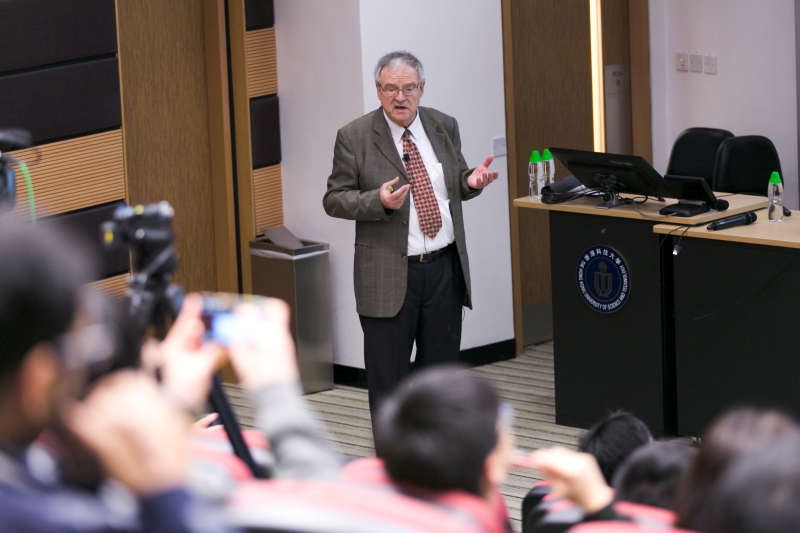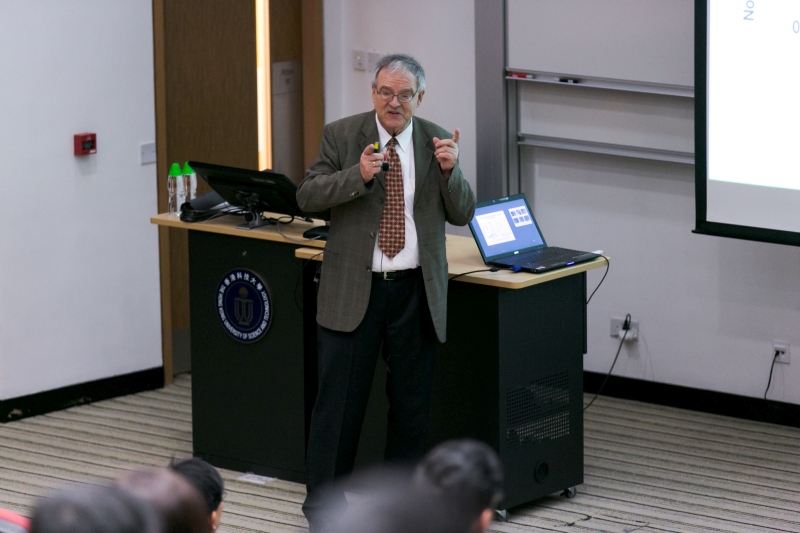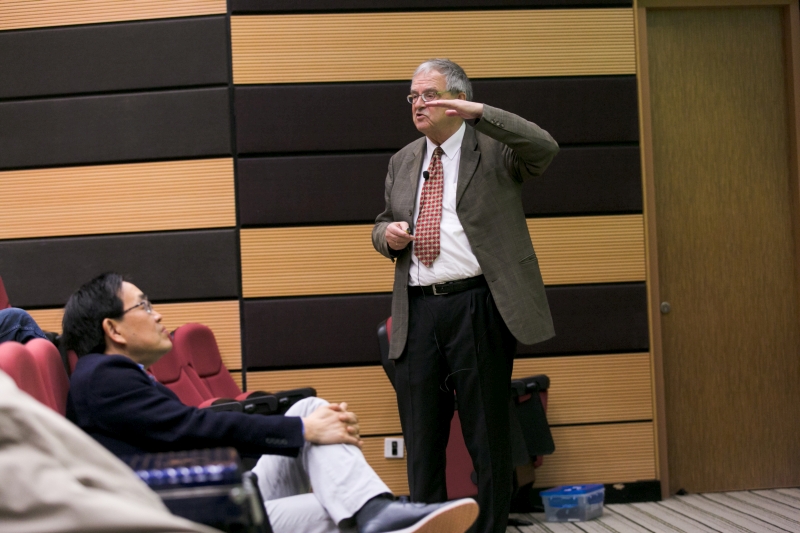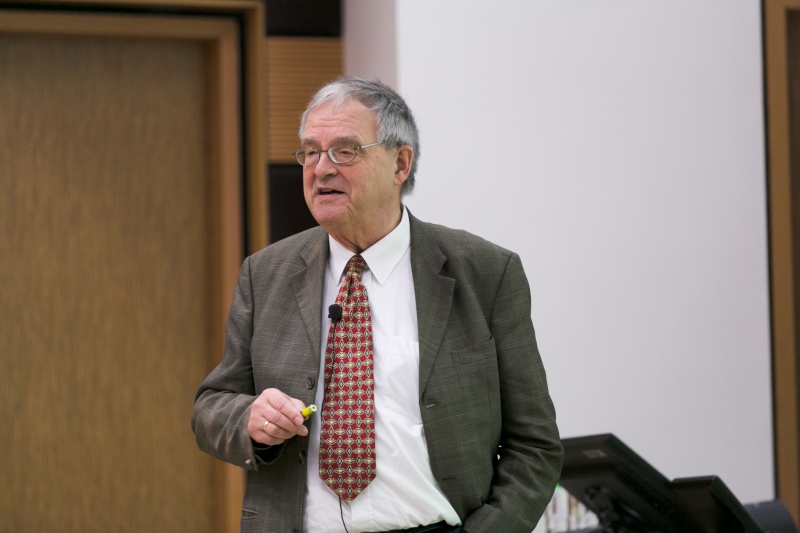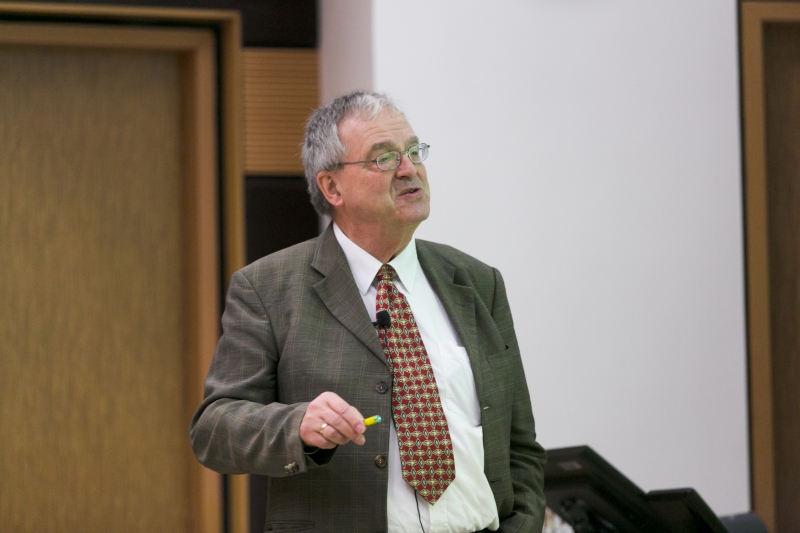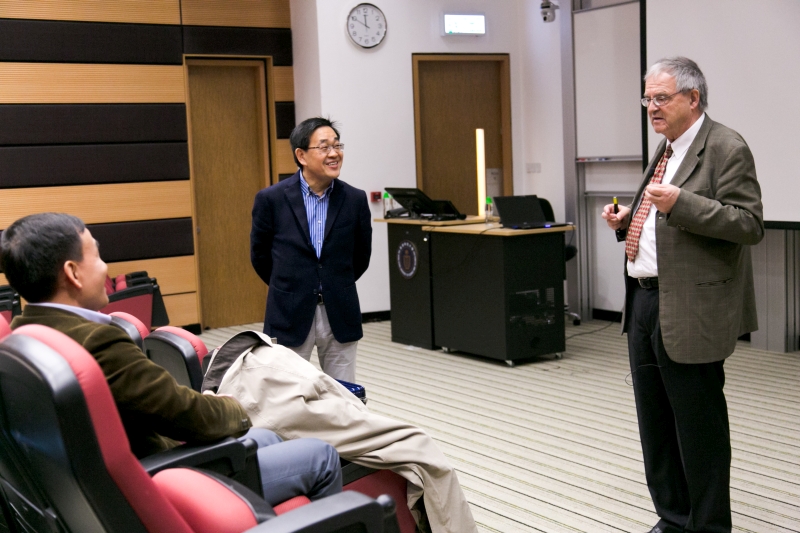Characterization of Nanoparticles in Different “Spheres”
Abstract
The lecture covers novel techniques developed for particle characterization in atmosphere and hydrosphere. Aside soot particles viruses and microorganisms pose the highest risk. To meet such challenges laser technology and biotechnology have to be used.
Photo-acoustic online characterization of soot nanoparticles
Zero-emission diesel engines are the vision of the automotive engineers. This seems possible by fine tuning of engine characteristics, first. This needs a fast responding soot sensor. Photoacoustic spectroscopy is the method of choice: within a NIR spectral window pulsed or modulated laser light exclusively measures the photon absorption (not extinction !) of the black soot particles. The absorbed light is converted to heat, which stimulates pressure variations used in photoacoustic spectroscopy. Time resolution is below 1 s. Measurement at fixed and tunable wavelengths will be presented.
Raman spectroscopy as a tool to describe the reactivity of soot oxidation
Secondly, diesel engine exhaust needs aftertreatment to get rid of soot particles. The goal is to produce, if any, only such soot nanoparticles with high oxidation reactivity. Aside thermo-programmed oxidation under oxidants like oxygen or nitrogen dioxide and water, Raman spectroscopy reveals the nanocrystallinity of soot particles, which controls the reactivity.
Optothermal particle separation of aerosols and hydrocolloids
Particle separation and characterization is feasible by laser light. In a first step thermophotophoretic velocimetry describes optical properties and particle size of suspended particles (hydrosol or aerosol). Here photons are used as “billiard cues” for sorting of ultrafine particles according their internal optical properties. First attempts to reach an “optical” particle separation within hydrosphere will become discussed. Photophoresis allows (by principle) a continuous particle sorting.
Surface-enhanced Raman spectroscopy (SERS) as label-free technique to describe microorganisms
The increasing need for frequent monitoring of pathogenic particles within air and liquids has stimulated enormous growth of new platforms using oligonucleotide probes, aptamers or antibodies as bioreceptors. Such bioanalysis often needs labeling for physical inspection of the receptor interaction. In contrast to this, SERS enables a label-free quick characterization of bacteria.
About the speaker
Prof. Reinhard Niessner obtained his diploma degree in Chemistry from the University of Freiburg in 1976 and PhD from the University of Dortmund in 1981. After becoming a lecturer in Inorganic and Analytical Chemistry in 1985, he served as a Professor for Inorganic and Analytical Chemistry at the University of Dortmund from 1986 to 1989. He joined the Technical University of Munich (TUM) in 1989 for his current position as a Chair of the Institute of Hydrochemistry and Chemical Balneology.
Prof. Niessner’s research interests are within environmental analytical chemistry, especially devoted to applications of laser spectroscopy, nanoparticle characterization, and microarray technologies. The main subjects of interest are aerosols, hydrocolloids and biofilms, within hydro- and atmosphere. He is currently an associate editor of the American Chemical Society journal, Analytical Chemistry, and a member within the advisory or editorial board of Analytical Sciences, Annual Review of Analytical Chemistry, Microchimica Acta, Analytical & Bioanalytical Chemistry, Fresenius Environmental Bulletin, Talanta, International Journal of Environmental Analytical Chemistry and Toxicological & Environmental Chemistry.
Prof. Niessner received several highly prestigious awards including the Emanuel-MerckPrize for Analytical Chemistry in 1990, the Smoluchowski-Award for Aerosol Research of the Association for Aerosol Research in 1991, the Fritz-Pregl-Medal of the Austrian Society for Analytical Chemistry in 1996, and the Fresenius-Award for Analytical Chemistry of the German Chemical Society in 2000. He was a Titular Member in the International Union of Pure and Applied Chemistry and served in the European Science Foundation and many national scientific organizations.


